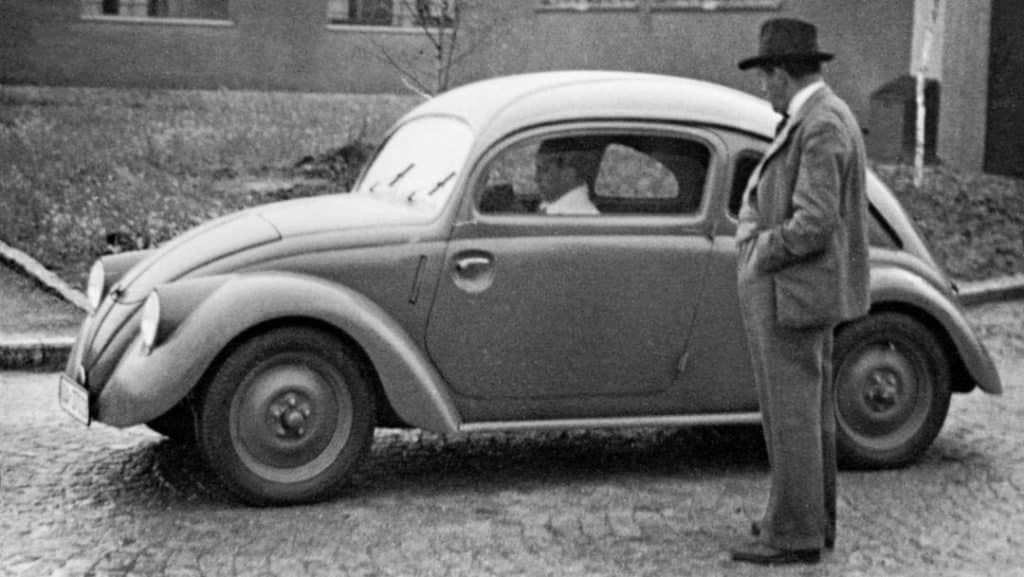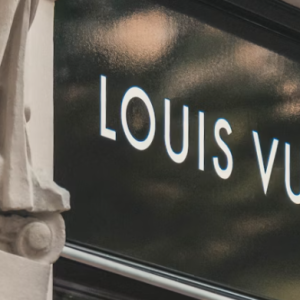If you have ever been in a conversation with a car enthusiast, you know that their knowledge runs deep. Chances are that they told you everything about a car’s engine, model, and history in that conversation. If you’ve experienced this then maybe you participated in the conversation, or maybe you left feeling like you should learn more about cars.
Whatever the case, one thing you don’t need to be a car expert for is to recognize different car brands. One of the most recognizable brands out there is also one of the most luxurious brands out there – Porsche.
Porsche has been around for almost 100 years which means, you’ve likely come across their logo at some point in time and/or have passed a Porsche on a highway on some drive. Porsche’s logo is one of the most recognizable logos in the car industry and it’s for a good reason!
If we’ve captured your interest, read on below to learn how this logo came to be and how this iconic brand was developed.
Meet Porsche
If you want to learn more about Porsche, you must first travel back in time to 1931 when Porsche was founded. In 1931 you’ll find founder, Ferdinand Porsche, joining forces with Anton Piëch and Adolf Rosenberger to together launch a car consulting and design business. Their initial production included military vehicles, but it wasn’t long before Porsche began producing cars that embodied top performance and only the highest quality.
Ferdinand was no stranger to the luxury car industry. Before launching Porsche, he worked at Mercedes-Benz as their chief engineer. While there, Ferdinand spent some of his time designing vehicles for Volkswagen, which gave him his first taste of what went into designing vehicles.
It wasn’t until 1948 that Porsche first started their German operations. This came after they created their first car in 1945. Launched under the leadership of Ferdinand’s son, Ferry, and Ivan Hirst, the head of Volkswagen’s Board of Directors, this was the first step Porsche took in its journey of becoming a leader in this space.
Today, Porsche is a highly respected luxury manufacturer of automobiles, specifically specializing in the higher-end automotive market of luxury sports cars, sedans, and SUVs.
Porsche’s Evolution
1931: Porsche is founded
In 1931, the Porsche brand was founded by Ferdinand Porsche, alongside Anton Piëch and Adolf Rosenberger. The company was founded in Germany, with a headquarters in central Stuttgart. Before Porsche became the Porsche we know today, it was founded as a business that offered consultant and development work. That means Porsche didn’t start as a business that manufactured vehicles under the Porsche name. This quickly changed though because one of Porsche’s first jobs as a consultant was to develop a “people’s” vehicle called a “Volkswagen.”
The first Volkswagen vehicle was the Volkswagen Beetle, which even today is still known to be one of the world’s most successful automobile designs ever. This was also the first time that Porsche had to pivot. Once World War II started, production of the original Beetle had to shift to a military version of the design, and they were tasked with producing more than 52,000 vehicles. Despite Porsche and Volkswagen’s combined efforts, the military awarded a contract to Henschel & Son.
As World War II came to an end, Porsche continued developing tank vehicles, creating the Maus mega-heavy tank, which they produced two trials of. It was also around this time that Ferdinand Porsche was removed from his role as the head of Volkswagen’s Board of Directors, and Ivan Hirst was named the new head.
1945: The first Porsche car is created
Around the time that Ferdinand was replaced by Ivan, in 1945, Ferdinand was also formally detained for war crimes. While he was never taken to court or put on trial, he did spend 20 months in jail. Unable to run the Porsche company, his son, Ferry, took matters into his own hands.
In 1945, Ferry took everything he learned from his father and put it into practice, creating his own car design, the first Porsche model. This first Porsche model was called the 356 and was manufactured in Austria. What was significant about the 356 was that this is believed to be the first car style vehicle Porsche created. Before this, Porsche’s production was military vehicles.
Production was held off until there were enough pre-orders of this model to sustain the production but once the orders came in, this manufacturing project was taken on by Porsche Konstruktionen Gesmb. This was a company under Porsche that was founded by Ferry and his sister, Louise.
1964: The Porsche 911 is created
Between 1954 and 1964, Porsche began creating different models of vehicles but in 1964, Porsche decided their original 356 needed an updated look. This new redesign was called the Porsche 911 and its creation was overseen by Ferry’s first son, Ferdinand Porsche. Unlike the 356, this model was outfitted with a 6-cylinder “boxer” engine.
While the model was developed in 1964, it has remained one of the most successful model cars. Even today when it comes to car racing, the 911 is always at top, and it continues to be a leader for road vehicle sales and rallies. Despite its remodeling updates, the same style features and basic design have remained in every version of the 911. While other Porsche vehicles have had their internal codes updated, the 911 has always remained the 911.
1990: Porsche partners with Toyota
If you fast forward a few decades to 1990, you will find that Porsche took a step forward in their attempt to dominate the car market with a partnership with Toyota. The goal of this partnership was to help Porsche learn and benefit from the popular Japanese carmaker, by seeing firsthand how Toyota manufactured its vehicles.
This partnership also had an additional benefit. In 2004, Toyota took steps to help Porsche adopt hybrid technology for their models.
1996: The Porsche Boxster is created
In 1996, another Porsche model was released, the Porsche Boxster. This was the first roadster-style car that was designed since the 550 Spyder was created in 1953. This Boxster featured 2 seats and double doors. When it came to this model’s design, Porsche turned to the Boxster Concept of 1992 as an inspiration.
If you fast forward to 2005, you’ll find a newer version of this Boxster, the Porsche Cayman, which was a fastback coupe iteration. This featured rear-wheel drive and was outfitted with a mid-engine, while keeping just 2 seats. In a constant effort of improvement, another iteration of this Boxster was released in Geneva in 2012, followed by another version in 2017. These were the Porsche 718 Cayman and the Porsche 718 Boxster, which both restored the 718 tags.
The 2000s: The Porsche Carrera makes a splash

While Porsche is widely known for its 911 model, what may be less known is that Porsche owns the Carrera brand. Throughout the years, Porsche has used this Spanish word meaning “race career” as the name of their models, but in the 2000s the Porsche Carrera GT was released with its standalone “Carrera” name. In the 2000s this quickly became one of the leading sports cars in the world and has been ranked the 8th best sports car ever.
2002: The Porsche Cayenne is created
Porsche saw an opportunity to create a different style of vehicle in 2002, so Porsche released a mid-size deluxe crossover SUV called the Porsche Cayenne. This was the first off-road sports car model that Porsche manufactured. This was first released only in the United States as the first V8 model in 1995.
Another version of the Cayenne was released in Geneva in March 2010. This iteration used the same platform as the Audi Q7 and the Volkswagen Touareg, but all the design elements were created in-house. In 2014, this version was updated again to include a plug-in hybrid version. That’s not all though. In 2017, the Cayenne S Diesel version took home the honor of towing the heaviest aircraft in the world, a 285-ton Air France Airbus A380, breaking a Guinness World Record. The Cayenne S Diesel pulled this aircraft 42 meters breaking the record that was formally held by Nissan.
Also in 2017, a third-generation Cayenne was announced, which was officially launched in 2019. This updated model was outfitted with turbocharged engines.
2009: Porsche partners with Volkswagen
While Porsche has always worked closely with Volkswagen, it wasn’t until 2009 that an official partnership was announced. This partnership came in the form of collaboration. Together, they released the Volkswagen-Porsche 914 and the Volkswagen-Porsche 914-6. The first version included a Volkswagen engine, while the second version included a Porsche engine.
To make this partnership official, a deal was signed in 2009 which merged their manufacturing operations under the name “United Automotive Group.” The partnership agreement outlined that Volkswagen AG would hand 50.76% of its shares over to Porsche SE. By doing this, Volkswagen AG would now oversee some of the Porsche SE management positions and work. With this stipulation, Volkswagen AG could remain in charge of the group and could potentially buy out Porsche AG. Together, under “United Automotive Group,” the two brands oversee Audi, Bentley, Skoda, SEAT, Lamborghini, Bugatti, Ducati, MAN, and Scania.
2012: The Porsche Macan is created
The latest new model release from Porsche is the Porsche Macan, which was announced in November 2012. Officially released in 2014, the Macan is a deluxe crossover SUV. The SUV market is competitive but with this model, Porsche can be a player against other SUVs like the Audi Q5, Range Rover Evoque, and/or the Mercedes-Benz GLC. To launch this model, Porsche included it at both the Tokyo and the Los Angeles Motor Shows.
Like the Cayenne, this Macan has the same platform as an Audi model, the Audi Q5. Furthermore, Porsche took inspiration from Audi’s suspension and wheelbase, but just like with their other models, they kept the exterior, interior, and engine in line with their Porsche brand features.
Roadblocks Along the Way
The car market is a competitive one. Car lovers are loyal so being able to sway customers to your brand, can be a challenge. One way that Porsche fought to conquer this roadblock is through its partnerships. By partnering with Toyota and Volkswagen, Porsche increased its brand awareness and was able to gain a loyal customer base.
Just like with any other car brand, having to navigate recalls and changing safety requirements provides an opportunity for a roadblock and bad publicity. Porsche has not been immune to dealing with this just because they are a luxury car brand. However, what Porsche has been able to cash in on is its solid reputation as a brand. Porsche’s reputation has helped to keep even bad publicity related to this at bay.
The Meaning of Porsche’s Logo and Porsche’s Logo History
When you look at Porsche’s logo throughout the years, you will notice there have not been any substantial changes that make the logo feel drastically different than when it was first released. This first logo was launched with the car brand in the United States in 1952. Now, 70 years later, the logo has been a symbol of power and luxury when it comes to the automotive industry.
The logo embodies the luxurious elements of the brand. With high-end features like high-performance engines and all the models being outfitted with the Porsche name and logo, the logo does its job. Even though the logo is believed to be first developed by Ferdinand Porsche’s son, Ferry, after he had a meal with Porsche distributor Max Hoffman and drew the logo on a napkin, the logo has always represented the luxurious mission of the Porsche brand.
Below we take a deeper dive into how the logo came to be and the different stylistic elements of this widely recognized logo.
1952-1963: The first version of the Porsche logo
When Porsche was first announced as a brand, the first version of the Porsche logo was also released to the public in 1952. As this was being developed, it was important that the logo included elements that conveyed grace, uniqueness, and luxury.
1963 – Present: The second version of the Porsche logo
Porsche only went through one major redesign for its logo, which took place in 1963. This iteration featured more modern elements. As Porsche began to release more and more modern models of their vehicles, it felt right that their logo mimicked this practice with an updated look.

This version is the logo we all know today. The gold Porsche crest consists of four smaller quadrants, with a second, smaller crest right in the center. On top of the larger crest is the wordmark “Porsche.” The top-right and lower-left sections feature black and red stripes, while the top-left and lower-right sections feature three antlers which were inspired by Wurttemberg’s family crest.
The smaller crest in the center features a black horse with a soft “Stuttgart” wordmark, honoring the headquarters of Porsche.
Porsche’s logo font:

Besides the crest, one of the most distinguishable features of the Porsche logo is the wordmark. This wordmark is strategically placed at the top of the crest and is written in a sans serif font. The specific sans serif font variation has changed throughout the years, but the style of the lettering has always had similar qualities as the font before it.
What draws the eye to the wordmark is the logo coloring choice, which we describe in more detail in the next section.
Porsche’s logo color:
The colors of the Porsche logo have remained consistent throughout the years. The consistent colors are red, black, and gold. More specifically, the red has varied in shading, sometimes looking more orange or violet over the years as the logo developed more. The wordmark was gold initially but turned black in 1994. This change gave the logo a more industrial look because the new color for the wordmark was steel. This also drew the eye more to the black lettering and made the wordmark stand out more. Over the years Porsche played around with features and line elements to ensure the logo was well-defined, modern, and sharp.
Porsche’s logo symbols:
The Porsche logo features an emblem that resembles a crest. This crest is a nod to Stuttgart, where Porsche’s headquarters is located. Located within Germany, Stuttgart is a city in the southern region that was built on a horse-breeding farm. This is what the horse symbol pays tribute to. Porsche elected to honor Stuttgart in this way because the horse embodies the power of the city.
Porsche Today:
Today the word Porsche is synonymous with high luxury. That’s because since Porsche was started in 1931, Porsche vehicles have skyrocketed to become the standard of what luxury vehicles should be. Their Porsche 911 is the longest-produced sports car even after the 8th generation of the model was released in 2019. And Porsche’s third-generation Porsche Cayenne was released with touch screen features, smart voice control, and even a Wi-Fi hotspot.
In the 90+ years since Porsche was founded, it has continued to dominate the luxury automobile industry because it is a brand built on power, speed, performance, family, and durability.
The Porsche headquarters can still be found in Stuttgart, Germany but instead of it only being Porsche located there, you’ll find Volkswagen AG as well. Volkswagen AG owns the Porsche brand and together they produce the impressive lineup of Porsche vehicles you know and love.
Lessons Learned from Porsche
The biggest lesson you can learn from Porsche is that keeping to your logo’s original elements can be the best decision for your company. Porsche only went through one significant redesign, and even that redesign didn’t shift too far away from the core colors and overall aesthetic.
No matter how large or small your business is, you want your business to stick around for years to come. One of the most affordable ways to do this is by creating a logo that doesn’t need a drastic rework. You want a logo that your customers will always associate with your business, whether they are a customer from 70, 50, or 10 years ago.



















